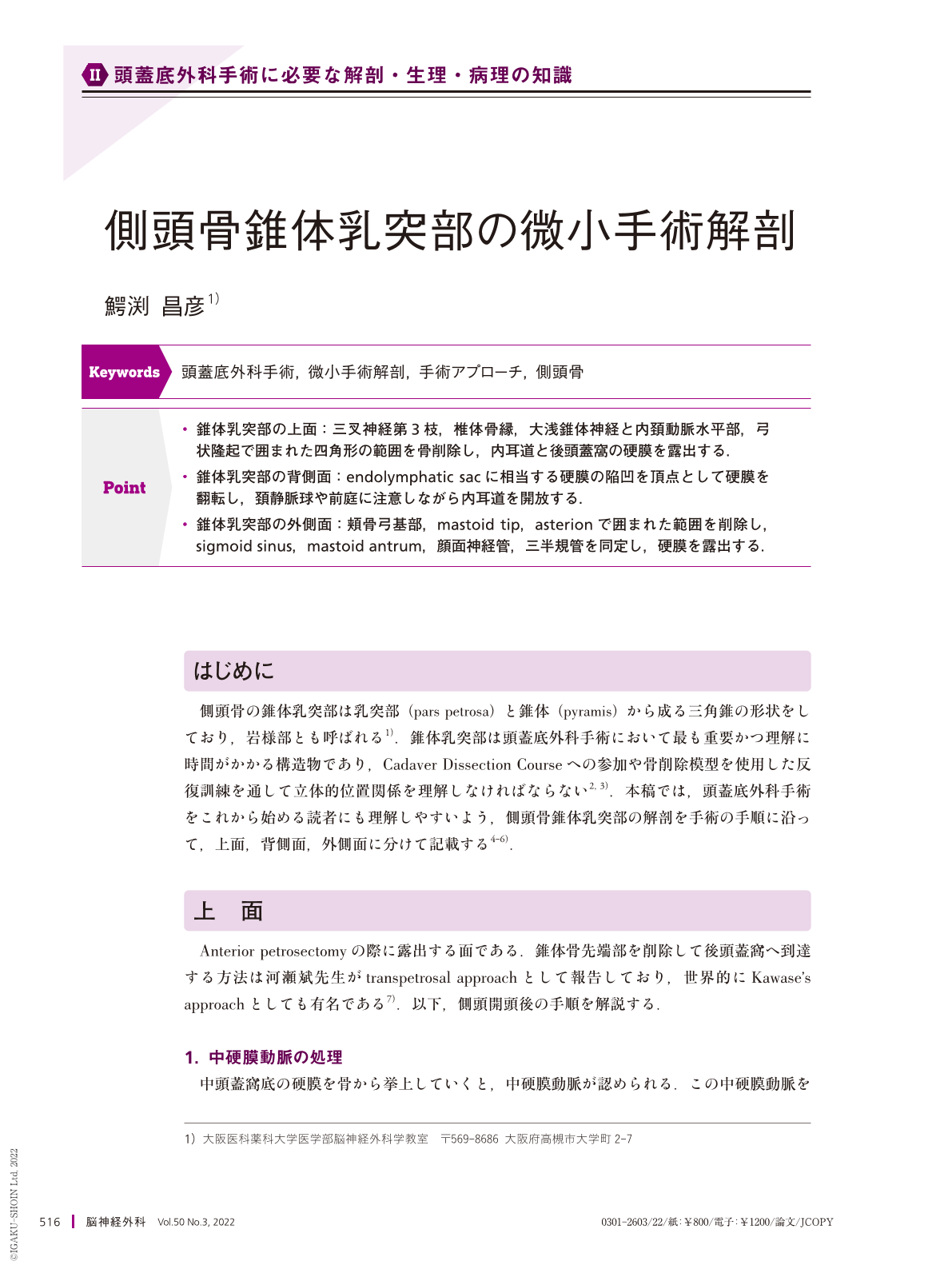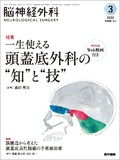Japanese
English
- 有料閲覧
- Abstract 文献概要
- 1ページ目 Look Inside
- 参考文献 Reference
Point
・錐体乳突部の上面:三叉神経第3枝,椎体骨縁,大浅錐体神経と内頚動脈水平部,弓状隆起で囲まれた四角形の範囲を骨削除し,内耳道と後頭蓋窩の硬膜を露出する.
・錐体乳突部の背側面:endolymphatic sacに相当する硬膜の陥凹を頂点として硬膜を翻転し,頚静脈球や前庭に注意しながら内耳道を開放する.
・錐体乳突部の外側面:頬骨弓基部,mastoid tip,asterionで囲まれた範囲を削除し,sigmoid sinus,mastoid antrum,顔面神経管,三半規管を同定し,硬膜を露出する.
For a surgeon to become skilled at skull base surgery, they should have mastered the three-dimensional anatomy of the petrous part of the temporal bone. The anatomy encountered during surgery is demonstrated from the superior, posterior, and lateral aspects of the petrous bone. The landmarks of the superior aspect of the petrous bone are the third division of the trigeminal nerve, the petrous ridge, the arcuate eminence, the greater superficial petrosal nerve, and the internal carotid artery. Drilling of the rhomboid area surrounded by these structures results in the exposure of the internal auditory canal and the posterior fossa dura. A key landmark of the posterior surface of the petrous bone is the dural fovea which marks the apex of the endolymphatic sac. After a dura flap is raised in a “U” shape just beyond the fovea, the internal auditory canal is opened to resect an intacanalicular portion of a vestibular schwannoma. Mastoidectomy is then performed from the lateral aspect of the petrous bone. Drilling of the mastoid leads to the exposure of the sigmoid sinus, mastoid antrum, fallopian canal, and lateral semicircular canals. Knowledge of the precise surgical anatomy of the petrosal bone is required to perform safe and secure skull base surgery.

Copyright © 2022, Igaku-Shoin Ltd. All rights reserved.


